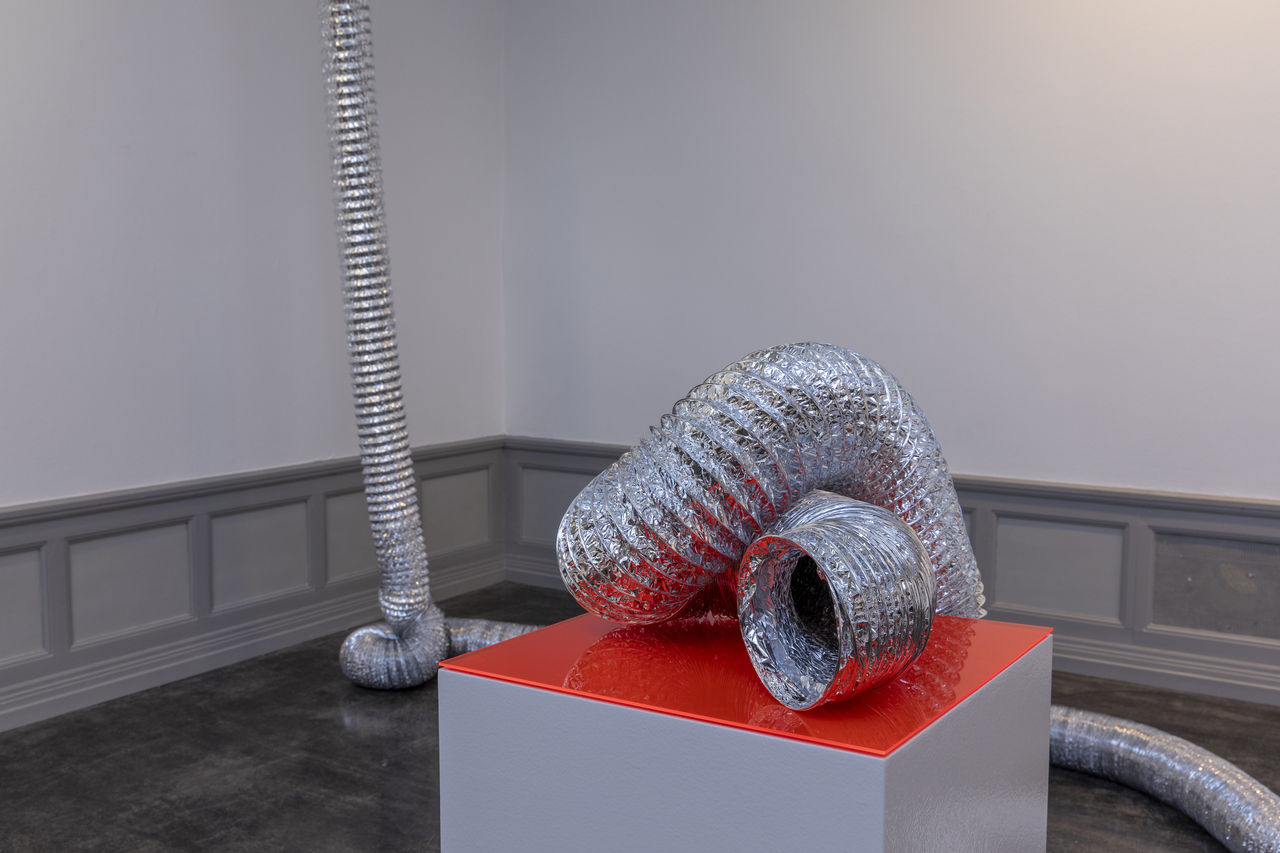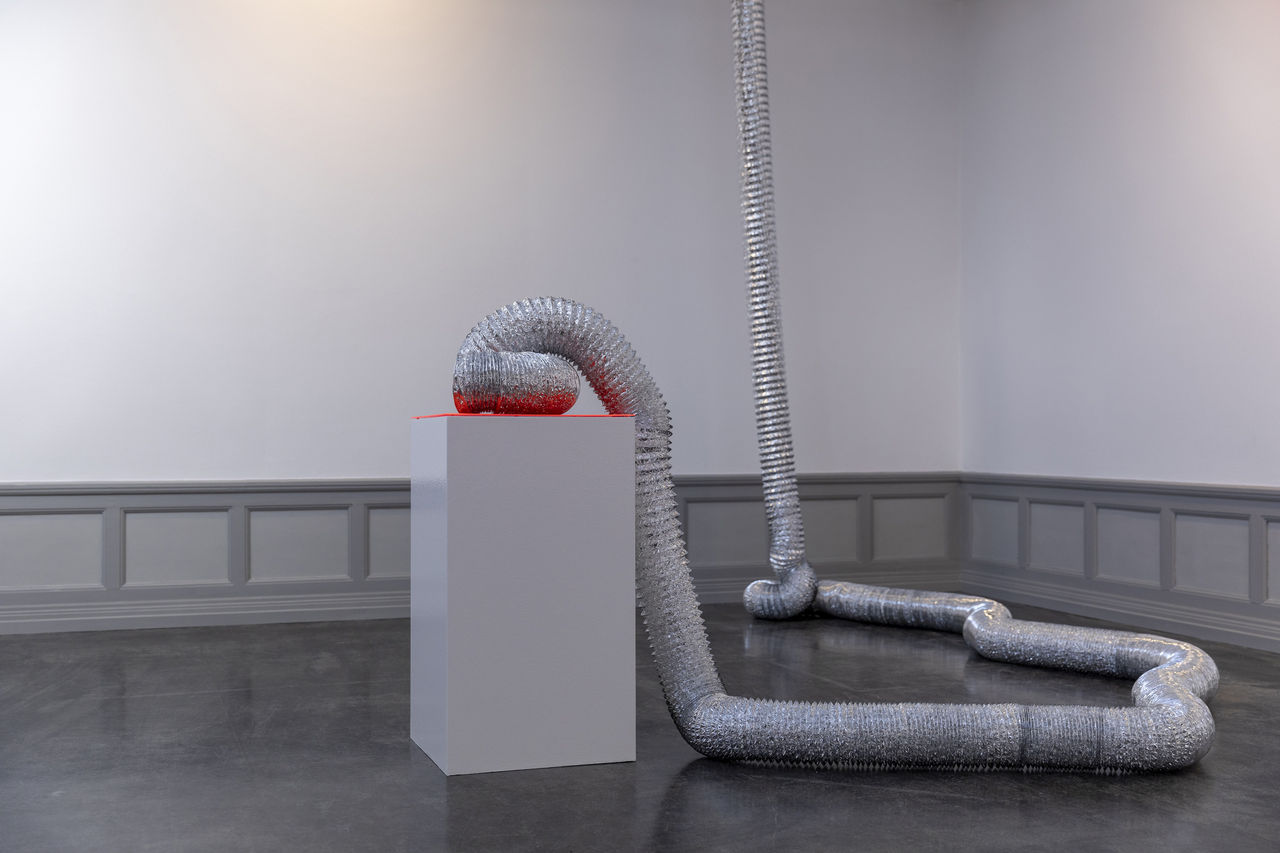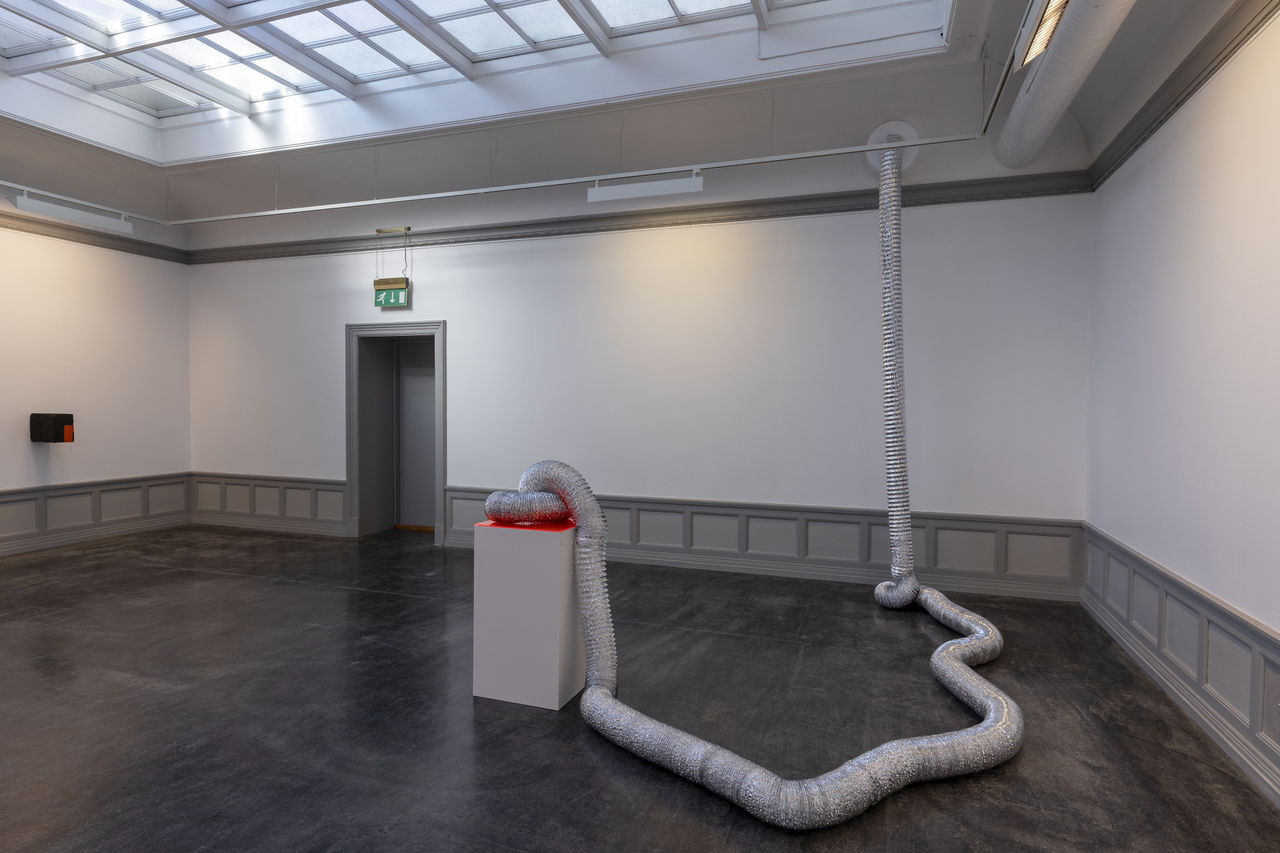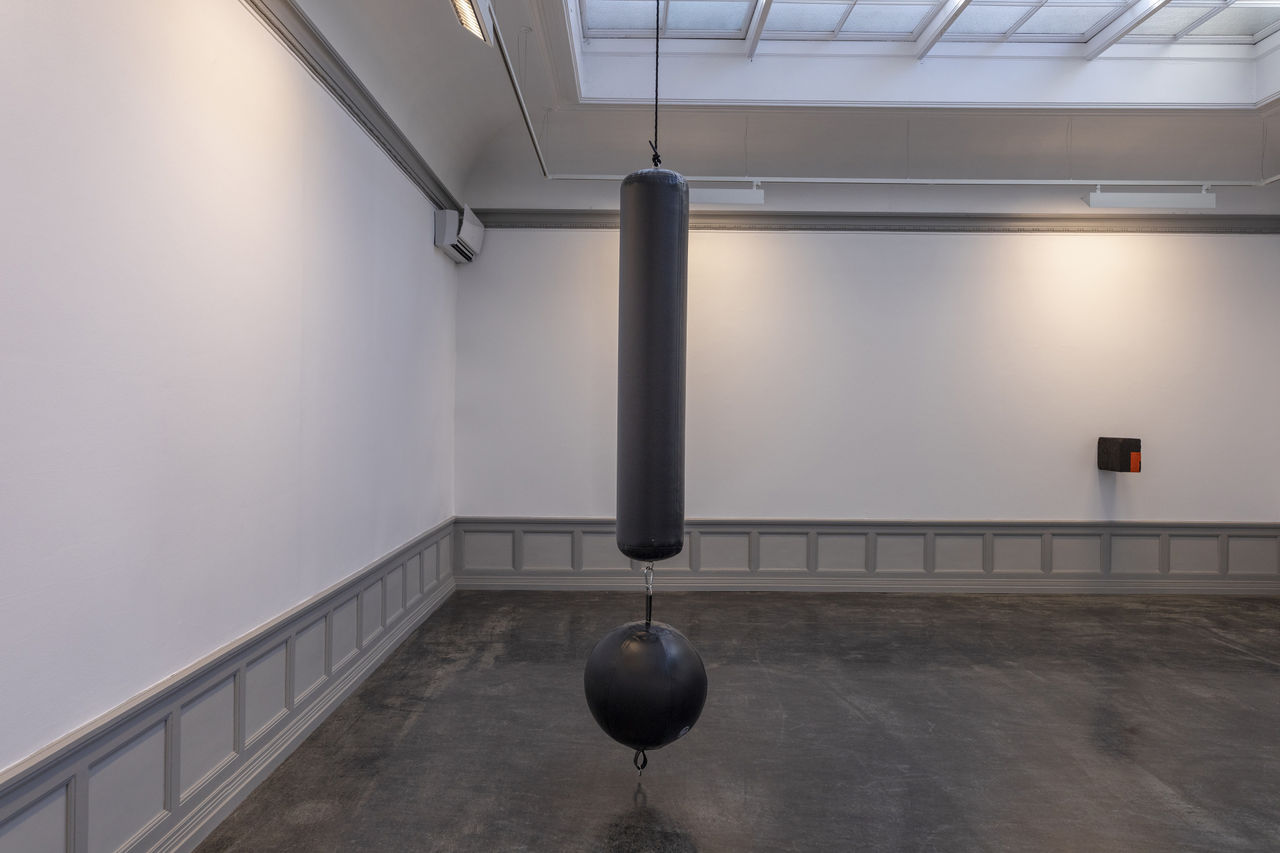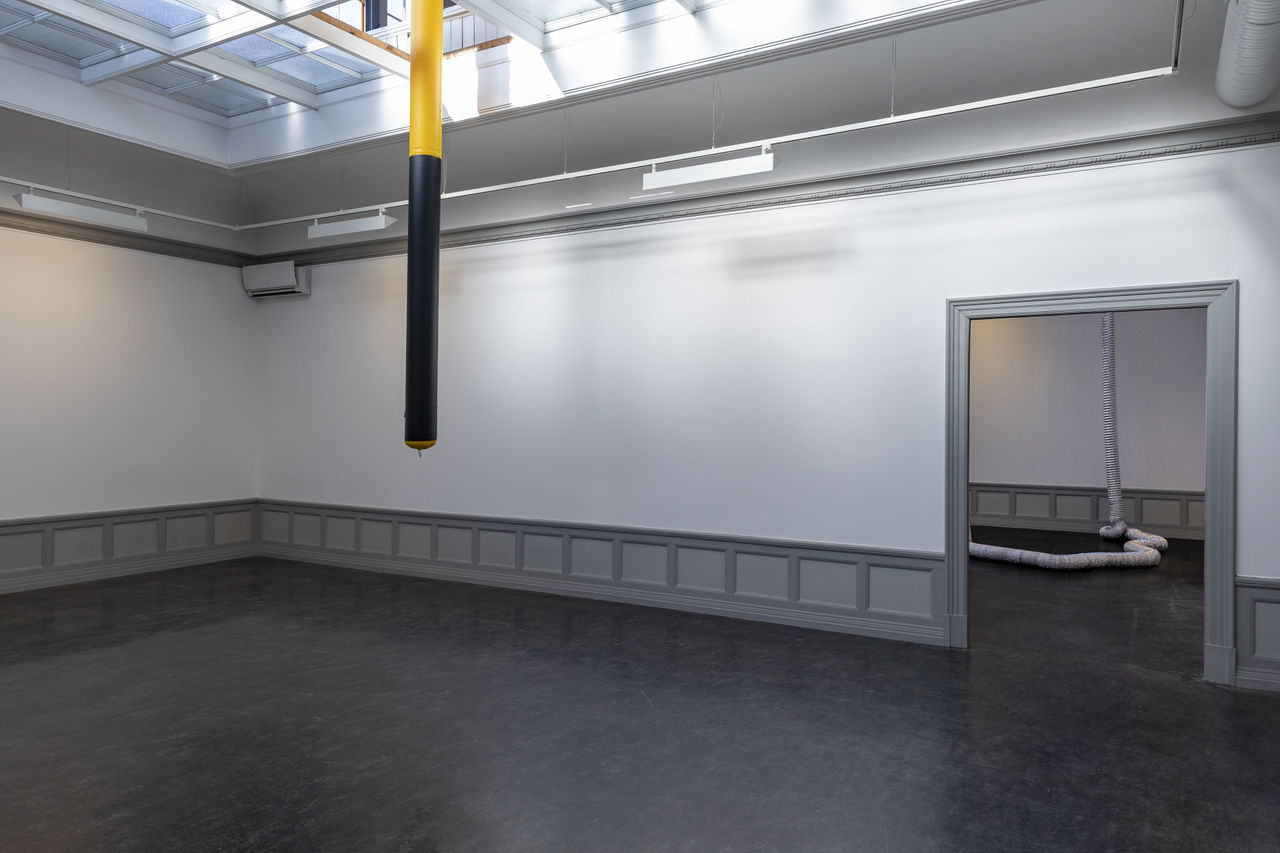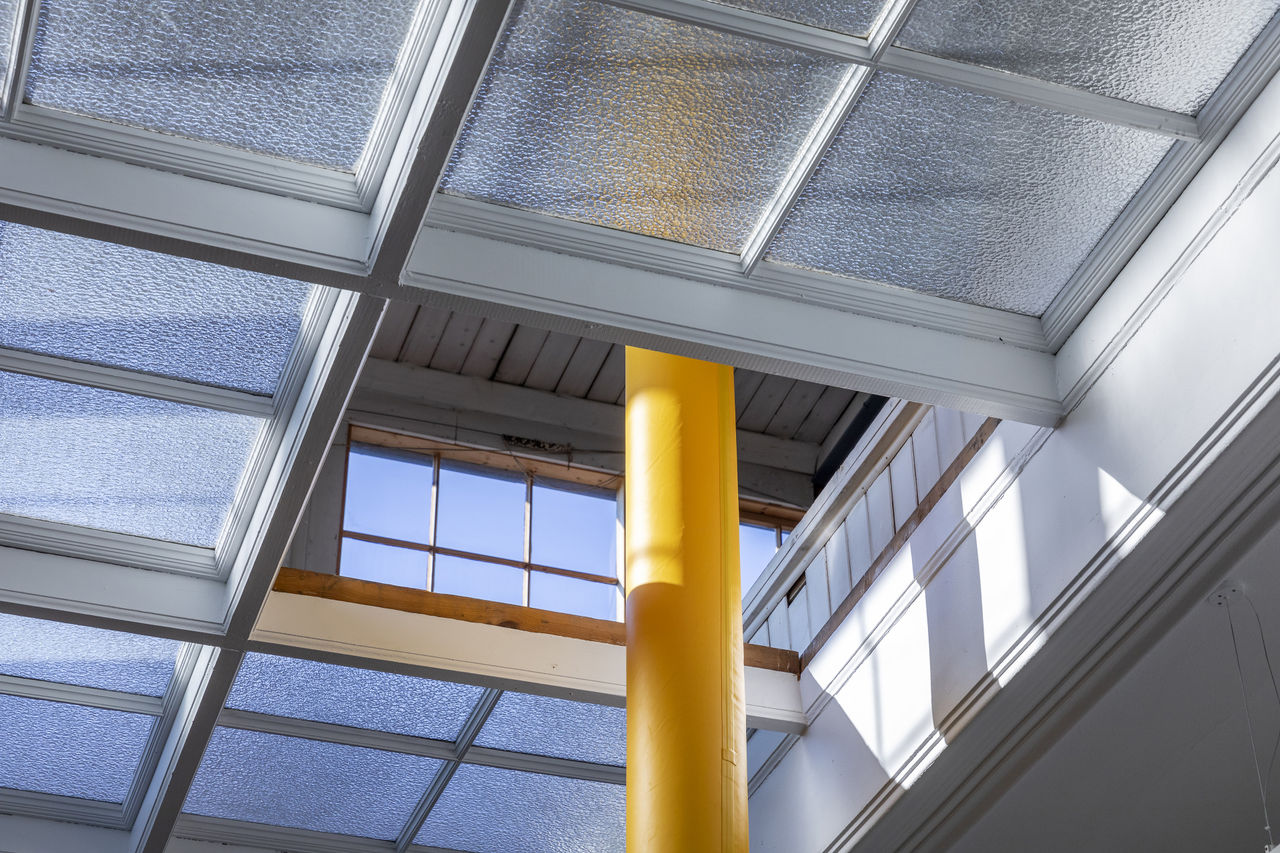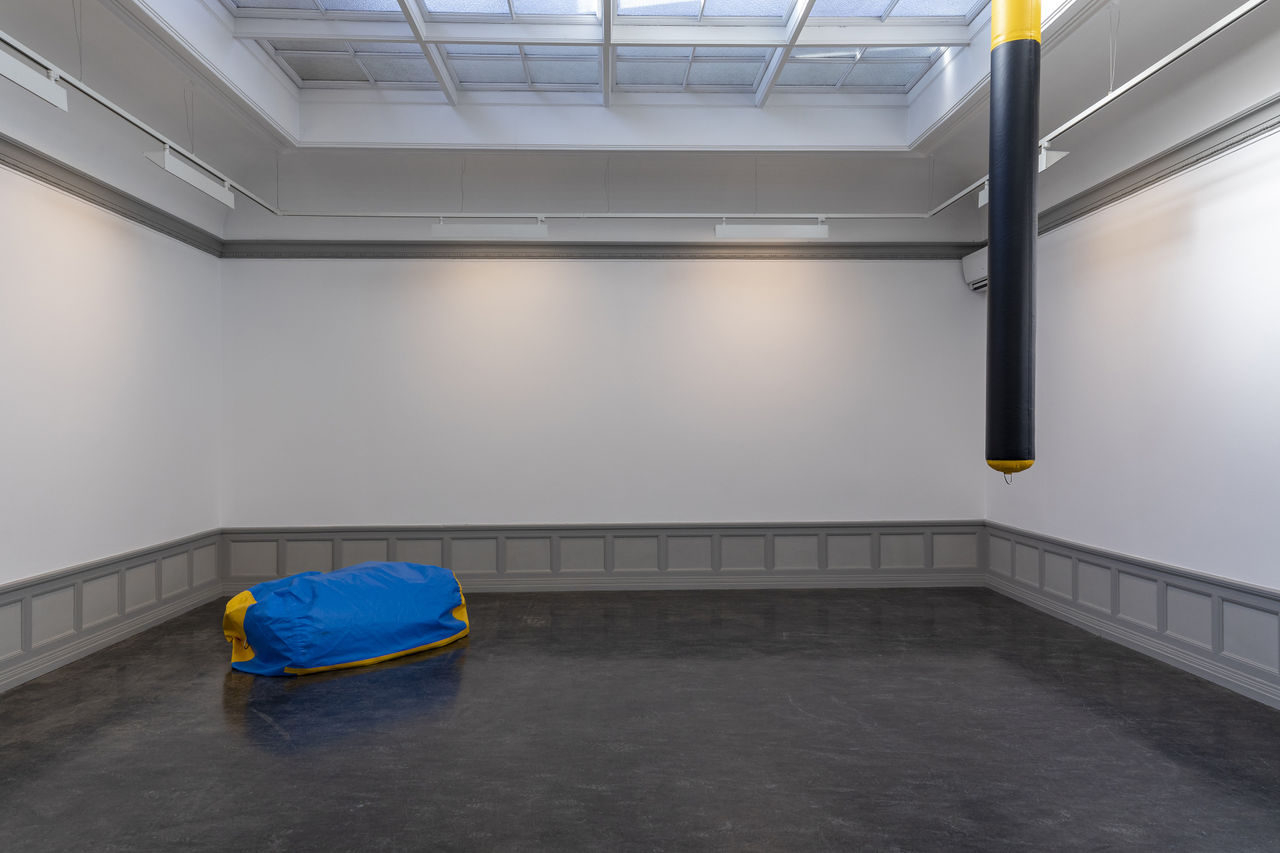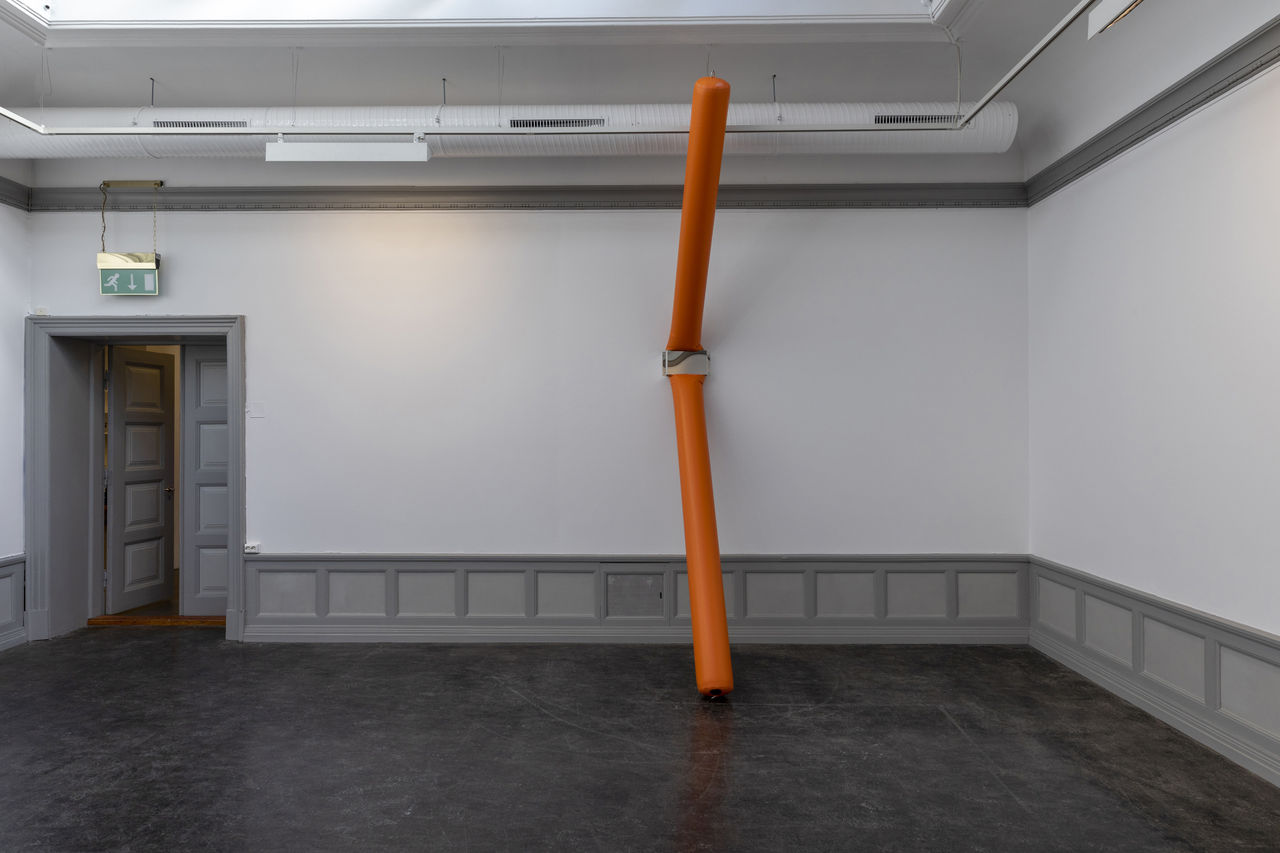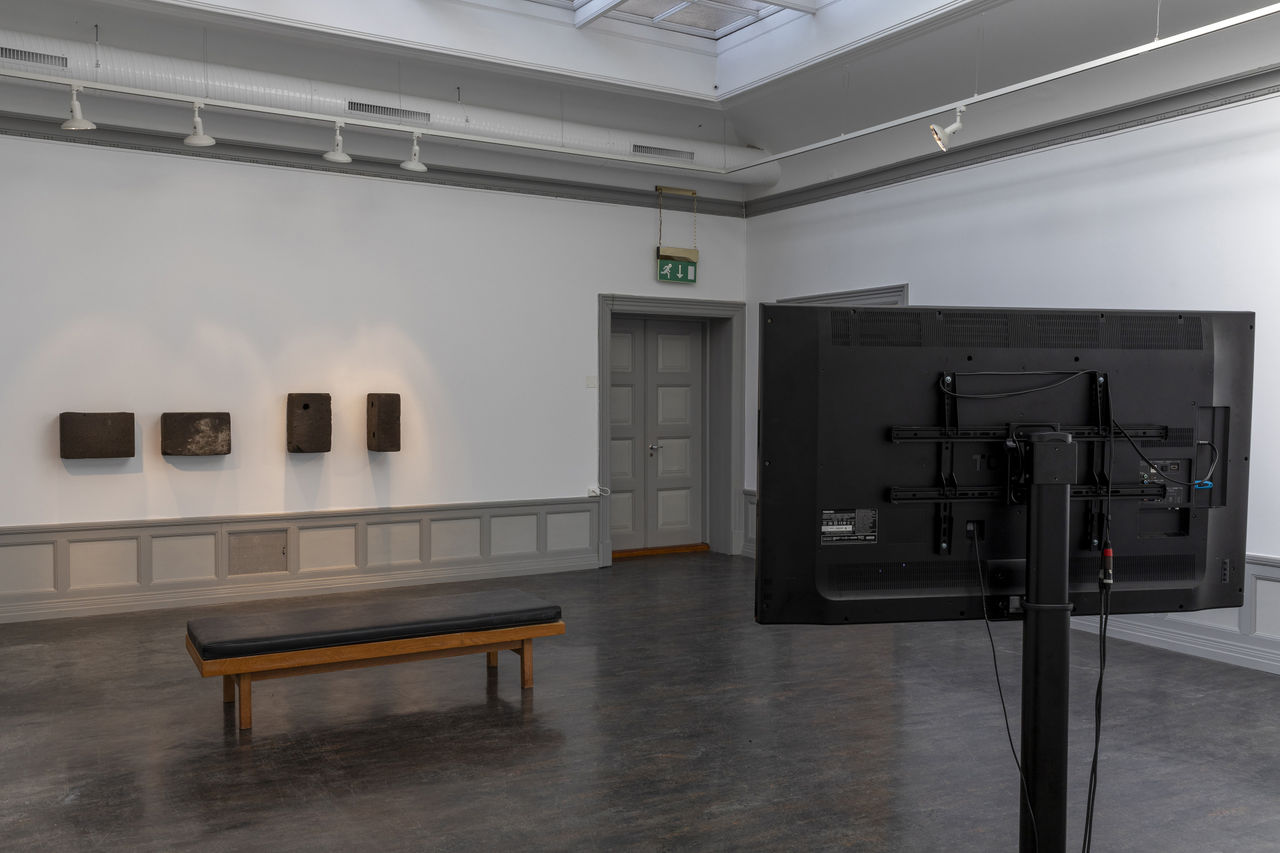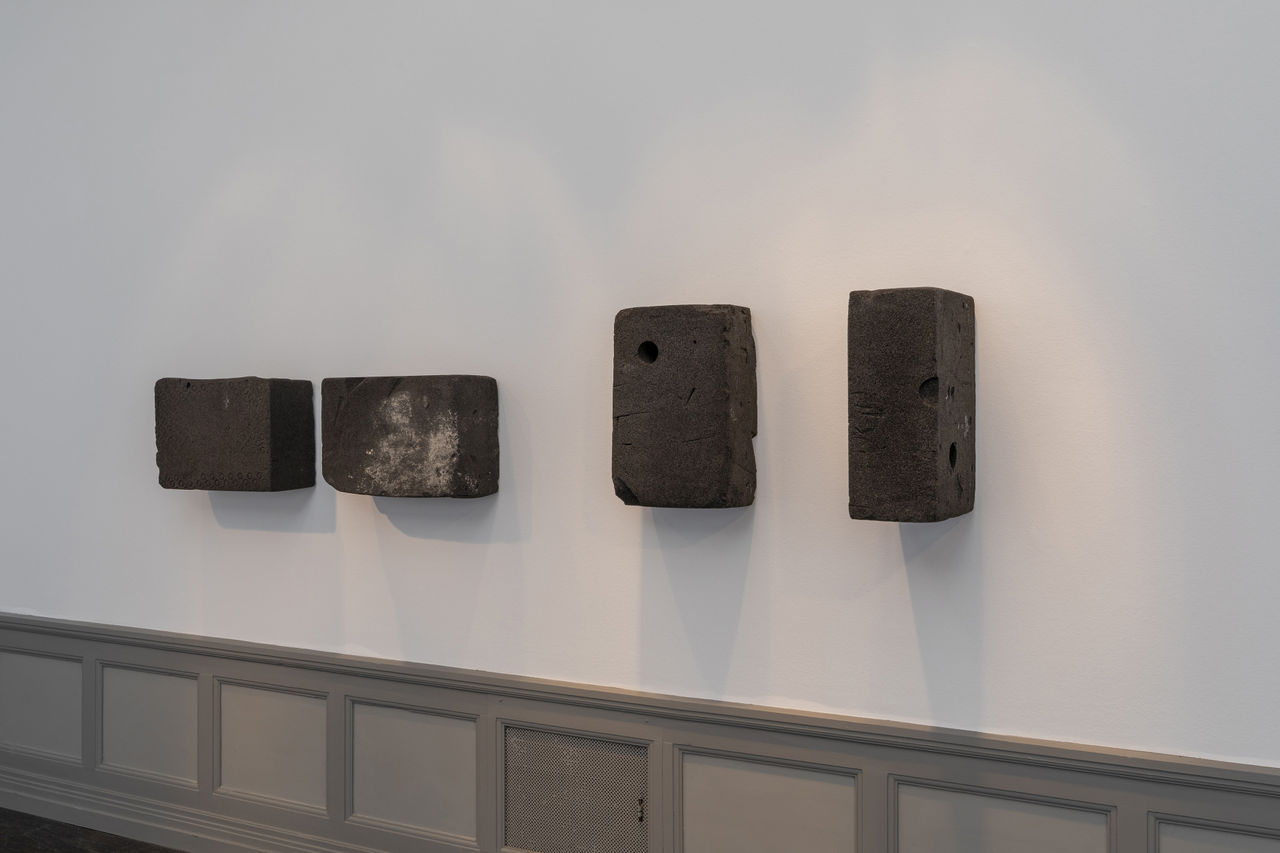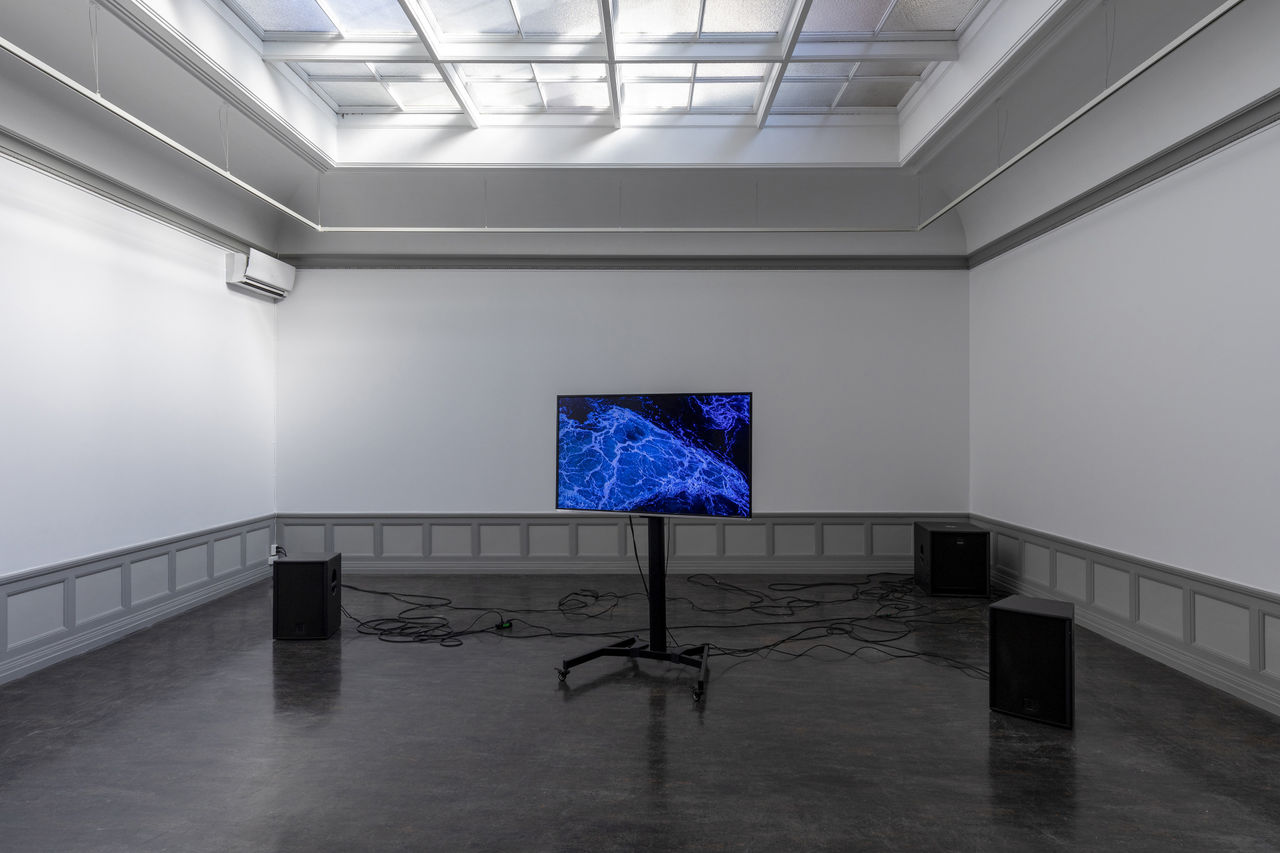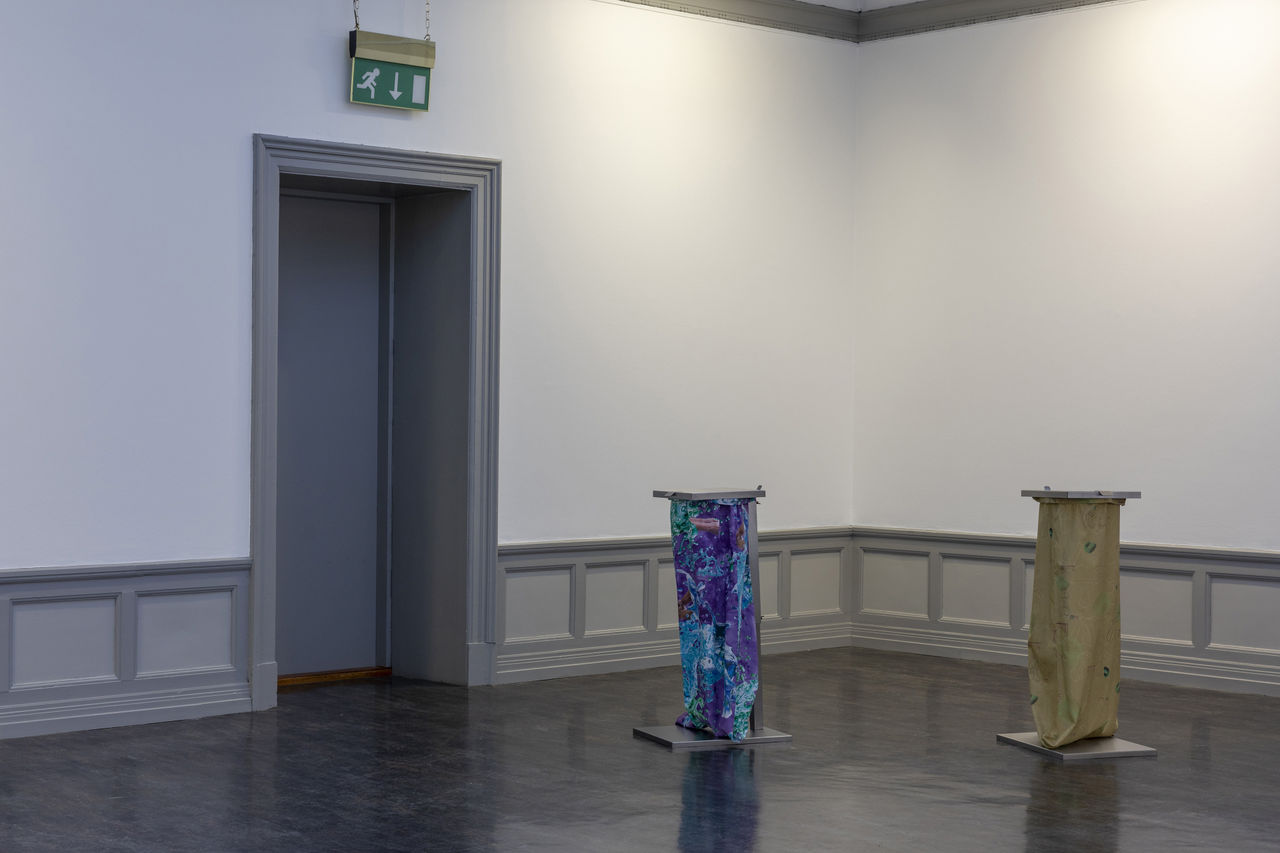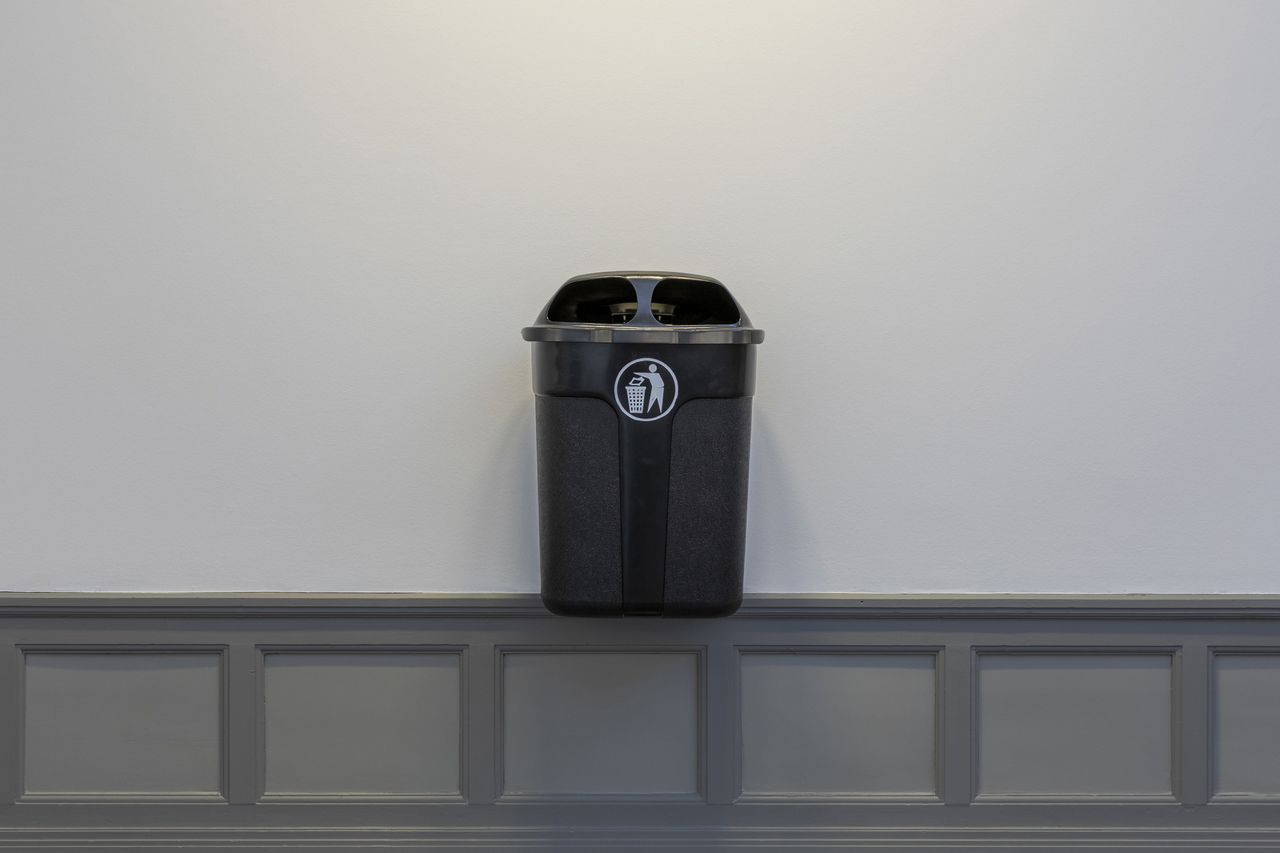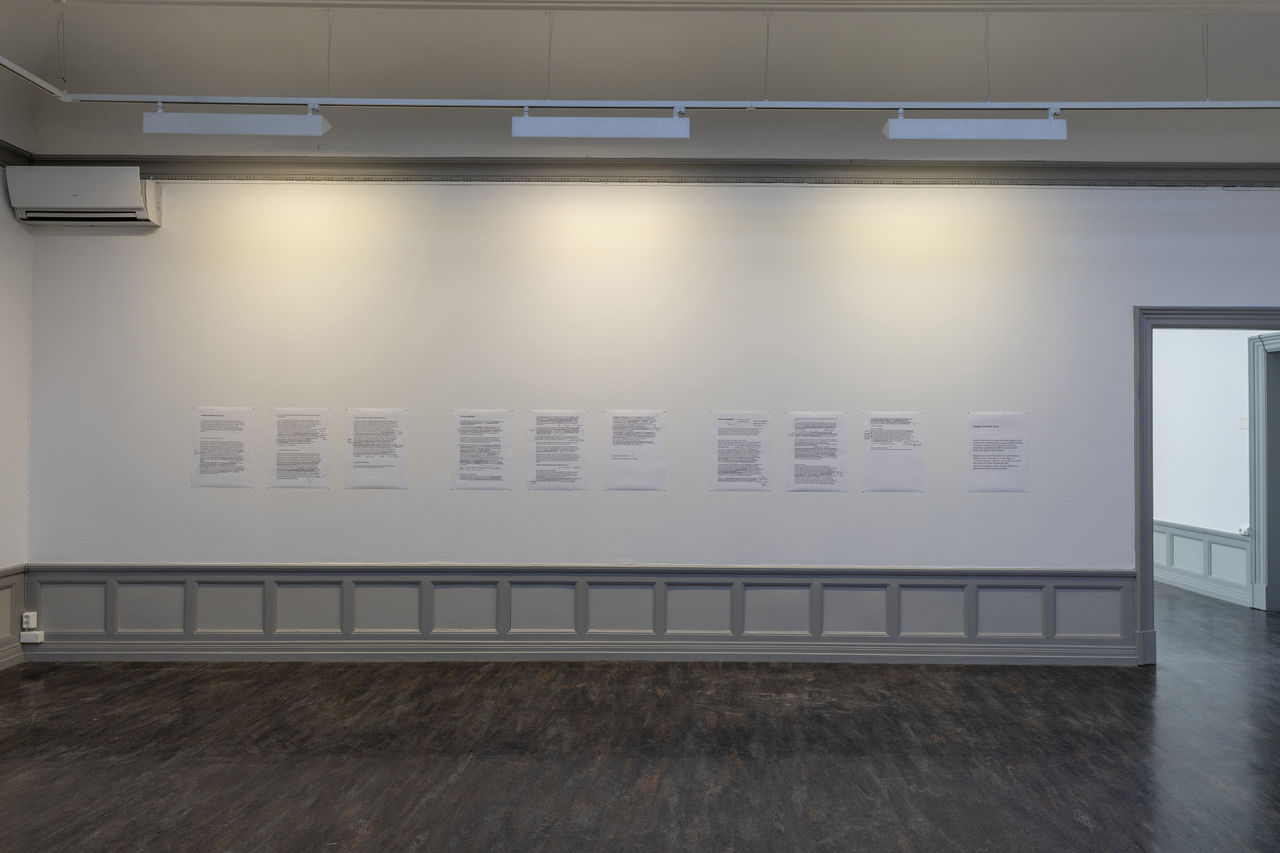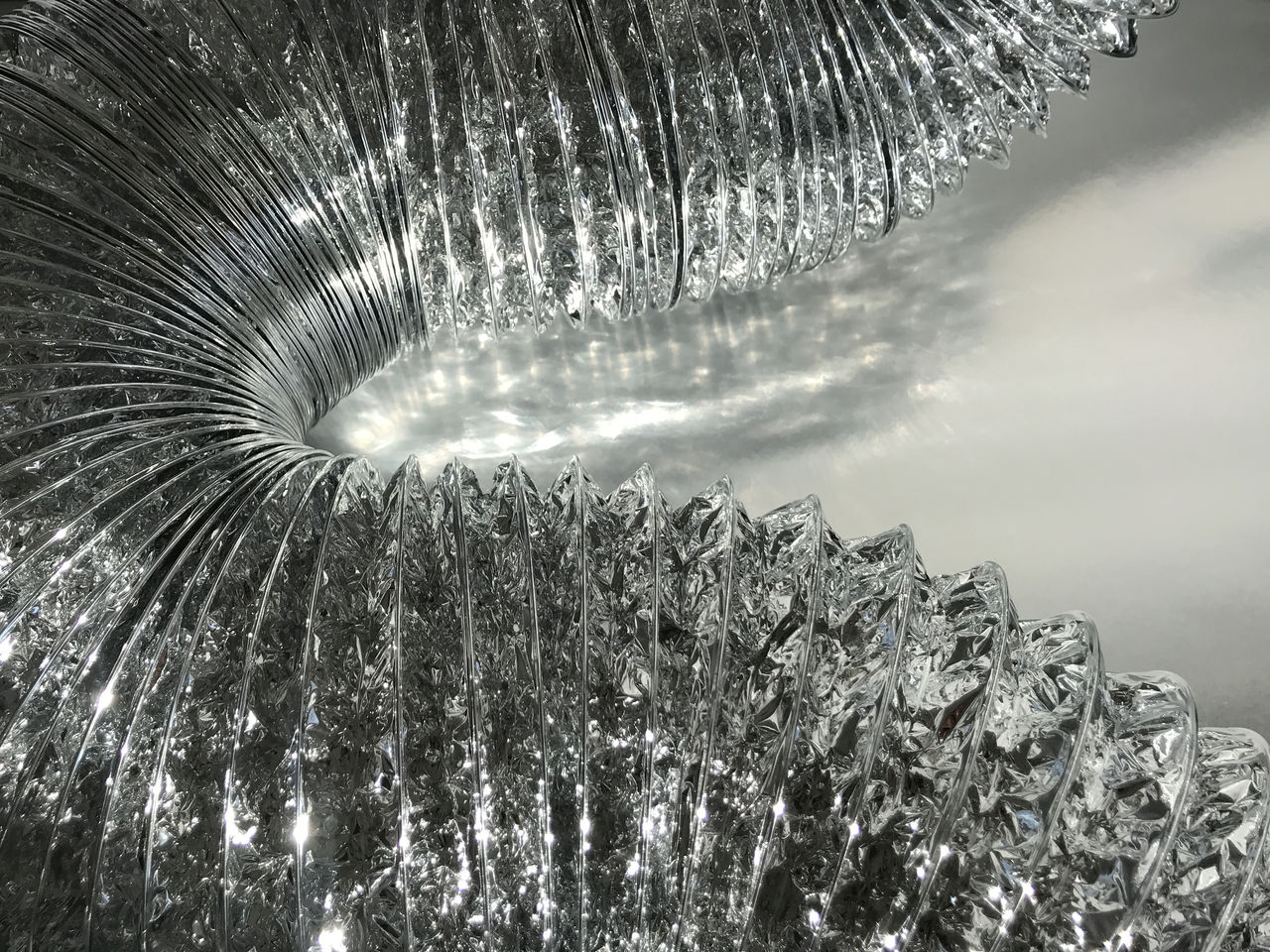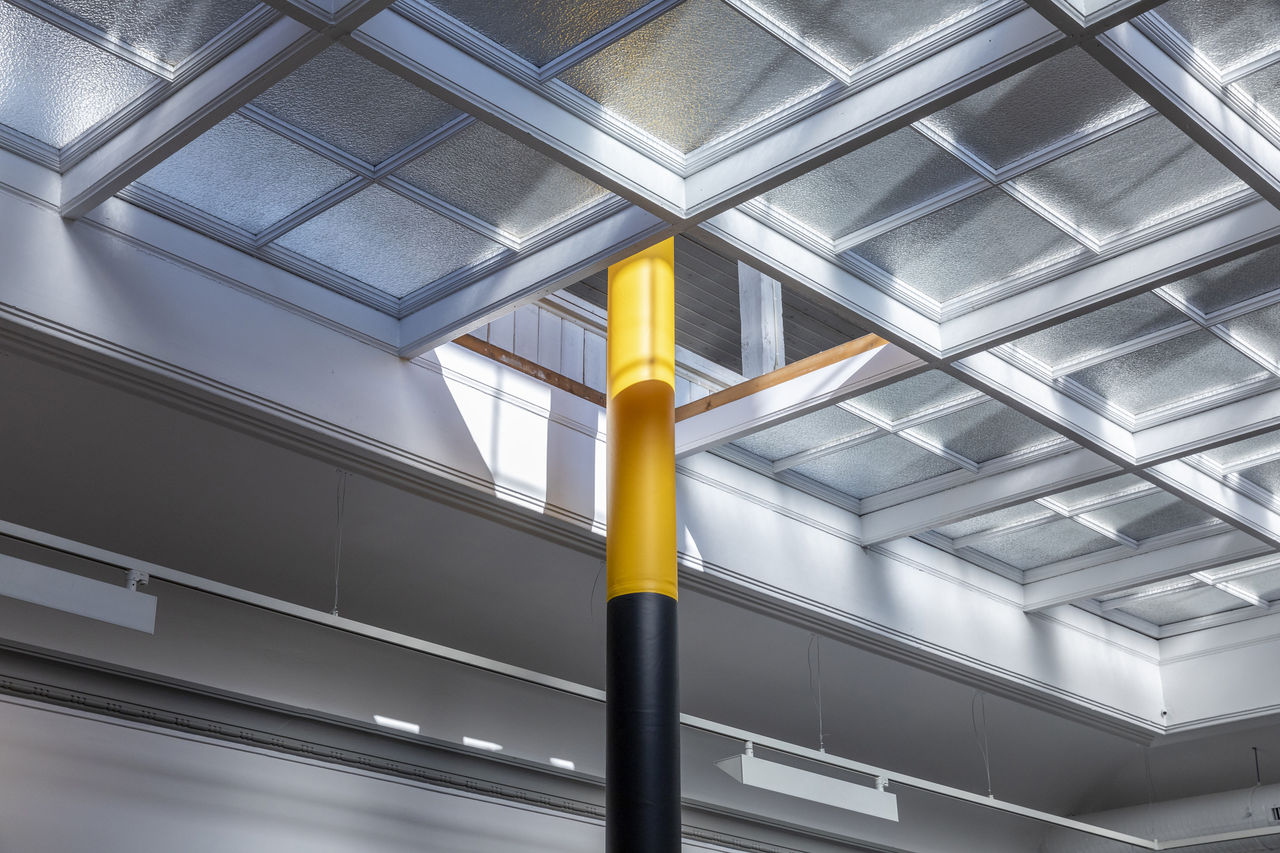
I forbindelse med det pågående utstillingsprosjektet Kunsthall 2025 presenterer nå Kunsthall Stavanger en utstilling av Marte Eknæs.
Kunsthall 2025-prosjektet inviterer ulike kunstnere til å lage nye verk som skal markere at Kunsthall Stavangers bygning fyller 100 år i 2025. I årene som leder opp til jubileet, vil bygningen gå gjennom en rekke renoveringer, og kunstnerne inviteres også til å skape arbeid som reagerer på dette. Som den første kunstneren som tar del i prosjektet, har Eknæs gått i dialog med Kunsthall Stavangers bygning og dens historie. Utstillingen etterfølger et prosjekt Eknæs viste høsten 2019 på Kunsthall Stavanger, hvor hun presenterte skulpturen Air Body (2019) i byggets trappeoppgang.
I den aktuelle utstillingen, kalt Air Conditions, jobber Eknæs med bygningen som et system, og hun aktiverer selve utstillingen som nok et element i bygningens struktur. Tittelen viser ellers både til luft som et materiale, og til skulptur som en ustabil fremtoning som
I forbindelse med det pågående utstillingsprosjektet Kunsthall 2025 presenterer nå Kunsthall Stavanger en utstilling av Marte Eknæs.
Kunsthall 2025-prosjektet inviterer ulike kunstnere til å lage nye verk som skal markere at Kunsthall Stavangers bygning fyller 100 år i 2025. I årene som leder opp til jubileet, vil bygningen gå gjennom en rekke renoveringer, og kunstnerne inviteres også til å skape arbeid som reagerer på dette. Som den første kunstneren som tar del i prosjektet, har Eknæs gått i dialog med Kunsthall Stavangers bygning og dens historie. Utstillingen etterfølger et prosjekt Eknæs viste høsten 2019 på Kunsthall Stavanger, hvor hun presenterte skulpturen Air Body (2019) i byggets trappeoppgang.
I den aktuelle utstillingen, kalt Air Conditions, jobber Eknæs med bygningen som et system, og hun aktiverer selve utstillingen som nok et element i bygningens struktur. Tittelen viser ellers både til luft som et materiale, og til skulptur som en ustabil fremtoning som antar forskjellige former ut ifra skiftende betingelser. Flertallsformen av ordet «conditions» («tilstander») understreker også at luft er en helt grunnleggende ressurs som finnes i varierende tilstander av ulik kvalitet.
Med utgangspunkt i kunsthallens nyinstallerte ventilasjonsanlegg har Eknæs laget verket Inhale (2020), som er direkte forbundet med luften som sirkulerer rundt i bygget. I dette verket blir luftsjakten forlenget ut i gallerirommet som en fremmed «arm» og avsluttes som et skulpturverk på en sokkel. Gjennom denne luftsjakten forbindes Inhale direkte med bygningens utside, og den stadige luftstrømmen er et av verkets materielle bestanddeler.
Et gjennomgående motiv i Air Conditions er hvordan Eknæs jobber med forestillinger om systemtenkning, og helt spesifikt hvordan hun peker på hvordan kunstverkene er del av et større system. Ifølge Eknæs kan enkeltverkene i utstillingen opptre i mange ulike roller, enten som aktivator, kommunikator, besitter, beholder, ledd, kropp eller materiale. Denne strategien med å lære fra nytteprosessenes, samt industriens språk og former, er en rød tråd som går gjennom både utstillingen og hele kunstnerskapet hennes. Dette kan for eksempel ses i Inflatables-serien som er blitt installert i to av galleriene. Disse oppblåsbare verkene, som er spesiallaget av PVC-plast av en båtfenderfabrikant, er enten senket ned i galleriet gjennom overlystaket, eller så har de skrumpet seg sammen i trassig motstand, slik at de setter søkelyset på luften som et materiale i seg selv.
Eknæs så opprinnelig for seg Air Conditions som en stedsspesifikk utstilling, men nå bruker hun heller begrepet «situasjonsspesifikk» som respons på de føringene hun har måttet forholde seg til. På grunn av koronapandemien har for eksempel monteringen av verkene skjedd ved hjelp av digitale plattformer, med Eknæs selv i Berlin og installeringsteamet i Stavanger. Det situasjonsspesifikke brukes her som en respons ikke bare på det fysiske stedet, men også på de betingelsene som virket inn på hvordan kunstverkene ble laget og utstilt.
I tråd med denne ideen om det situasjonsspesifikke peker Eknæs på klimakrisen og på hvordan oljeutvinning er med på å ødelegge miljøet vårt. Her spiller både Norge og Stavanger som landets «oljehovedstad» sentrale roller. Nå som klimakrisen forverrer seg, ser Eknæs nærmere på den rollen vi alle spiller i denne situasjonen, og da særlig rollen til kunstnere og kunstinstitusjoner. Som en direkte respons gir Eknæs avkall på noe av det tildelte utstillingsområdet sitt, idet hun vier en del av den ene salen til å presentere et søksmål som er blitt reist mot den norske stat på grunn av nye oljeletingslisenser i Barentshavet. En gruppe miljøvernsorganisasjoner står bak dette søksmålet, som vil behandles av Høyesterett 4.–12. november i år. Utstillingen vil suppleres med ytterligere informasjon etter hvert som saken utvikler seg.
Denne saken gir også en spesifikk kontekst til andre verk som vises i utstillingen, særlig videoverket aƒ12 Flares, Currents (2020), som er et samarbeid mellom Eknæs, filmskaperen Michael Amstad og musikeren Powell. Verket, som delvis er tatt opp i Stavanger-området, kombinerer havlandskapets velde og overflatetekstur med industrielle prosesser hvor uønskede utslipp håndteres ved hjelp av kjemiske sokker som suger til seg væsker. Verkets utstrakte og hypnotiske lydbilde gir inntrykk av væsker som koagulerer og tid som trekkes tilbake.
I det samme rommet viser Eknæs en serie med vegghengte skulpturer fra den pågående serien Insular (2017–). Skulpturene er laget av isoleringsmaterialet skumglass, som ofte brukes til å isolere rom hvor kunstverk lagres. Vanligvis forblir dette materialet gjemt bak veggene, men her tar Eknæs det med seg inn i gallerirommet, noe som understreker svingeffekten mellom kunstverkene og det videre systemet verkene er en del av.
En annen nyttegjenstand som ofte dukker opp i Eknæs’ kunst, er søppeldunken. Det som interesserer henne her, er hvordan slike dunker og kasser må ta seg av et helt grunnleggende hverdagsbehov, nemlig avfallshåndtering. Eknæs gjør en litt uvanlig kobling her mellom kunst og søppel, for selv om de befinner seg på hver sin side av verdiskalaen, har disse to kategoriene det til felles at de ofte stemples som «unyttige».
I Air Conditions-utstillingen blander Eknæs skulpturenes materialitet med materialiteten til Kunsthall Stavangers egen bygning. Enkeltverkene veksler på å utøve motstand mot og tilpasse seg til bygningens strukturelle lag på ymse vis. Til slutt bryter de gjennom arkitekturen for å vise Kunsthall Stavangers bygning som et levende, pustende vesen som utgjør en midlertidig ramme for betingelsene Eknæs skaper i sine verk.
Utstillingen er støttet av Kulturrådet.
f. 1978
Marte Eknæs bor og arbeider i Berlin og på Hamar. Praksisen hennes er i stor grad kontekstbasert, og hun jobber gjerne tverrfaglig og sammen med andre. Hun har stilt ut på blant annet Trondheim Kunstmuseum, Kunsthall Oslo, Kunstnerforbundet (Oslo), Kunstnernes Hus (Oslo), Bonner Kunstverein, Between Bridges (London) og What Pipeline (Detroit). Hennes neste utstilling «!» åpner på Efremidis Gallery, Berlin i november.
I henvisning til den stadig endrende konteksten rundt arbeidet sitt, lanserte Eknæs det nettbaserte og transdisiplinære prosjektet formsofflexibility.space (FOF) via Kunsthall Stavangers nettside i 2019, og utvikler det stadig med egne og andres bidrag.
Sammen med den sveitsiske filmskaperen Michael Amstad har hun produsert flere videoprosjekter, blant annet People Mover (2017) som er blitt vist på UKS (Oslo), Grüner Salon / Volksbühne (Berlin) og The Kitchen (New York). De har også et pågående audio-visuelt samarbeid med musikeren Powell, som publiseres på plattformen afolder.studio.

